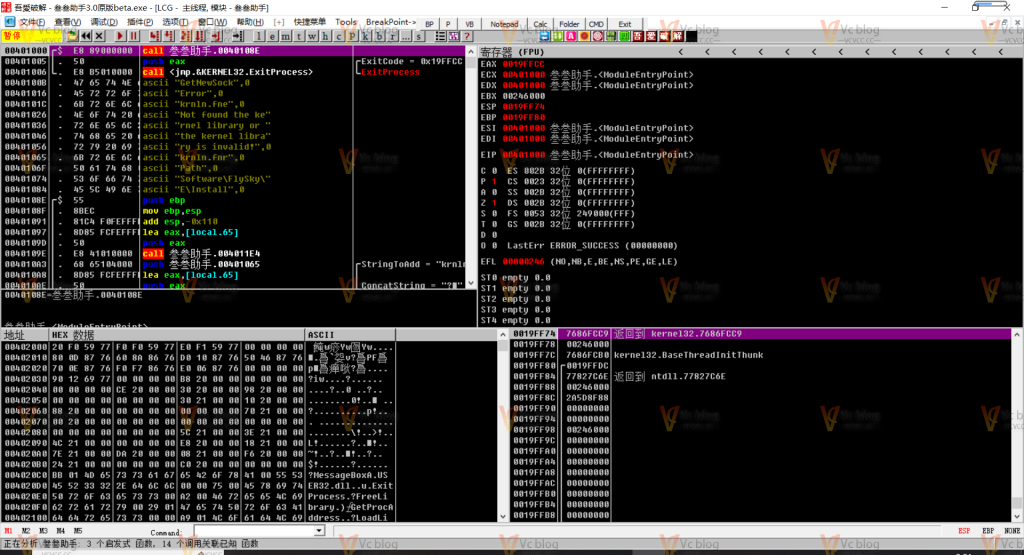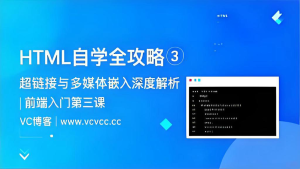在大型React应用开发中,随着组件复杂度的提升,性能问题逐渐成为制约用户体验的关键瓶颈。传统的useMemo和React.memo优化手段虽有效,但在复杂场景下往往力不从心。本文将从编译时与运行时两个维度,系统解析React性能优化的深层原理与实战策略。
![图片[1]-React性能深度优化:超越useMemo与React.memo的编译时与运行时策略](https://blogimg.vcvcc.cc/2025/11/20251116124233730-1024x768.png?imageView2/0/format/webp/q/75)
一、重新审视渲染性能:JavaScript执行与协调机制
React的渲染性能瓶颈主要来源于虚拟DOM的生成与协调过程。理解其底层机制是优化工作的基础。
(1) 组件渲染的触发条件与传播路径
组件重新渲染的根本原因包括状态变更、父组件渲染和Context更新。不当的渲染传播会导致性能雪崩。
渲染问题示例分析:
// 问题代码:不必要的渲染级联
const UserDashboard = () => {
const [user, setUser] = useState({
id: 1,
profile: { name: '张三', email: 'zhangsan@example.com' },
preferences: { theme: 'dark', language: 'zh-CN' }
});
const [dashboardData, setDashboardData] = useState(null);
// 任何user属性的变更都会导致所有子组件重新渲染
return (
<div>
<UserProfile user={user} />
<UserPreferences preferences={user.preferences} />
<DashboardContent data={dashboardData} />
</div>
);
};
// 即使props未变化也会随父组件重新渲染
const UserProfile = ({ user }) => {
console.log('UserProfile rendered'); // 频繁触发
return <div>{user.profile.name}</div>;
};二、编译时优化:构建阶段的性能预优化
(1) 代码分割与懒加载策略
利用动态import和React.lazy实现精准的代码分割,减少初始包体积。
import React, { Suspense, lazy } from 'react';
// 路由级分割
const ProductManagement = lazy(() =>
import('./pages/ProductManagement').then(module => ({
default: module.ProductManagement
}))
);
// 组件级分割 - 基于交互的懒加载
const ChartComponents = lazy(() =>
import('./components/ChartComponents').then(module => ({
default: module.ChartComponents
}))
);
const AnalyticsDashboard = () => {
const [showCharts, setShowCharts] = useState(false);
return (
<div>
<button onClick={() => setShowCharts(true)}>
显示图表分析
</button>
<Suspense fallback={<div>加载图表组件中...</div>}>
{showCharts && <ChartComponents />}
</Suspense>
</div>
);
};
// 预加载优化
const preloadChartComponents = () => {
import('./components/ChartComponents');
};
// 鼠标悬停时预加载
const AnalyticsLink = () => (
<div onMouseEnter={preloadChartComponents}>
<Link to="/analytics">数据分析</Link>
</div>
);(2) 构建时常量折叠与Tree Shaking
通过现代构建工具配置,实现深度的代码优化。
Vite深度优化配置示例:
// vite.config.js
import { defineConfig } from 'vite';
import react from '@vitejs/plugin-react';
export default defineConfig({
plugins: [
react({
// 编译时JSX转换优化
jsxRuntime: 'automatic',
babel: {
plugins: [
// 编译时常量提取
['babel-plugin-transform-react-constant-elements'],
// 内联环境变量
['transform-define', {
'process.env.NODE_ENV': 'production'
}]
]
}
})
],
build: {
// 代码分割策略
rollupOptions: {
output: {
manualChunks: {
'react-vendor': ['react', 'react-dom'],
'ui-library': ['antd', '@ant-design/icons'],
'utils': ['lodash-es', 'dayjs']
}
}
},
// 压缩优化
minify: 'terser',
terserOptions: {
compress: {
drop_console: true,
drop_debugger: true
}
}
}
});三、运行时优化:精细化渲染控制策略
(1) 状态结构设计与局部更新模式
通过状态下沉和选择器模式,实现精准的更新控制。
import React, { createContext, useContext, useMemo } from 'react';
// 拆分Context避免不必要的更新
const UserProfileContext = createContext();
const UserPreferencesContext = createContext();
const UserProvider = ({ children, initialUser }) => {
const [user, setUser] = useState(initialUser);
// 分离状态更新函数
const profileValue = useMemo(() => ({
profile: user.profile,
updateProfile: (newProfile) => setUser(prev => ({
...prev,
profile: { ...prev.profile, ...newProfile }
}))
}), [user.profile]);
const preferencesValue = useMemo(() => ({
preferences: user.preferences,
updatePreferences: (newPrefs) => setUser(prev => ({
...prev,
preferences: { ...prev.preferences, ...newPrefs }
}))
}), [user.preferences]);
return (
<UserProfileContext.Provider value={profileValue}>
<UserPreferencesContext.Provider value={preferencesValue}>
{children}
</UserPreferencesContext.Provider>
</UserProfileContext.Provider>
);
};
// 自定义Hook实现精确更新
const useUserProfile = () => {
const context = useContext(UserProfileContext);
if (!context) {
throw new Error('useUserProfile必须在UserProvider内使用');
}
return context;
};
const useUserPreferences = () => {
const context = useContext(UserPreferencesContext);
if (!context) {
throw new Error('useUserPreferences必须在UserProvider内使用');
}
return context;
};
// 优化后的组件 - 只有相关数据变化时才会重新渲染
const UserProfile = () => {
const { profile } = useUserProfile();
console.log('UserProfile渲染'); // 只有profile变化时触发
return <div>{profile.name}</div>;
};
const ThemeSwitcher = () => {
const { preferences, updatePreferences } = useUserPreferences();
const toggleTheme = () => {
updatePreferences({
theme: preferences.theme === 'dark' ? 'light' : 'dark'
});
};
return (
<button onClick={toggleTheme}>
切换到{preferences.theme === 'dark' ? '浅色' : '深色'}模式
</button>
);
};(2) 不可变数据更新与结构共享
使用Immer等不可变数据库,平衡性能与开发体验。
import { useImmer } from 'use-immer';
const ProductList = () => {
const [products, updateProducts] = useImmer([
{ id: 1, name: '产品A', stock: 10, details: { category: '电子', price: 299 } },
{ id: 2, name: '产品B', stock: 0, details: { category: '家居', price: 159 } }
]);
// 结构共享更新 - 只有变更路径上的对象会被重新创建
const updateProductPrice = (productId, newPrice) => {
updateProducts(draft => {
const product = draft.find(p => p.id === productId);
if (product) {
product.details.price = newPrice;
}
});
};
const addStock = (productId, quantity) => {
updateProducts(draft => {
const product = draft.find(p => p.id === productId);
if (product) {
product.stock += quantity;
}
});
};
return (
<div>
{products.map(product => (
<ProductItem
key={product.id}
product={product}
onPriceUpdate={updateProductPrice}
onStockAdd={addStock}
/>
))}
</div>
);
};(3) 依赖数组优化与记忆化策略
深入理解依赖数组的语义,避免过度记忆化。
const ComplexDataProcessor = ({ data, filters, sortBy }) => {
// 使用useMemo缓存复杂计算结果
const processedData = useMemo(() => {
console.log('重新计算数据');
return data
.filter(item => {
// 复杂的过滤逻辑
return filters.every(filter => filter(item));
})
.sort((a, b) => {
// 复杂的排序逻辑
if (sortBy.type === 'numeric') {
return a[sortBy.field] - b[sortBy.field];
}
return a[sortBy.field].localeCompare(b[sortBy.field]);
});
}, [data, filters, sortBy]); // 精确的依赖数组
// 使用useCallback避免函数重新创建
const handleItemSelect = useCallback((itemId) => {
// 处理选择逻辑
console.log('选中项目:', itemId);
}, []); // 空依赖数组 - 函数不会重新创建
// 依赖props的函数
const handleDataExport = useCallback((format) => {
// 依赖processedData的函数
exportData(processedData, format);
}, [processedData]); // 依赖processedData的变化
return (
<div>
<DataTable
data={processedData}
onItemSelect={handleItemSelect}
onExport={handleDataExport}
/>
</div>
);
};四、高级渲染模式:渲染劫持与组件复用
(1) 高阶组件与渲染属性的性能封装
通过HOC封装通用优化逻辑,实现关注点分离。
// 高阶组件:条件渲染与性能监控
const withPerformanceMonitor = (Component, componentName) => {
return function PerformanceMonitoredComponent(props) {
const renderCount = useRef(0);
const startTime = useRef(performance.now());
renderCount.current++;
useLayoutEffect(() => {
const endTime = performance.now();
const renderTime = endTime - startTime.current;
// 性能数据上报
if (renderTime > 16) { // 超过一帧时间
performance.mark(`${componentName}_slow_render`);
console.warn(`${componentName} 渲染耗时: ${renderTime}ms`);
}
startTime.current = performance.now();
});
return <Component {...props} />;
};
};
// 使用示例
const UserList = ({ users, onUserClick }) => {
return (
<div>
{users.map(user => (
<div key={user.id} onClick={() => onUserClick(user)}>
{user.name}
</div>
))}
</div>
);
};
// 增强后的组件
const MonitoredUserList = withPerformanceMonitor(UserList, 'UserList');(2) 使用useReducer管理关联状态
对于逻辑复杂的状态更新,useReducer可以提供更优的性能表现。
const formReducer = (state, action) => {
switch (action.type) {
case 'UPDATE_FIELD':
return {
...state,
values: {
...state.values,
[action.field]: action.value
},
// 批量更新验证状态
errors: {
...state.errors,
[action.field]: validateField(action.field, action.value)
}
};
case 'SUBMIT_START':
return {
...state,
isSubmitting: true,
submitError: null
};
case 'SUBMIT_SUCCESS':
return {
...state,
isSubmitting: false,
submitError: null
};
case 'SUBMIT_ERROR':
return {
...state,
isSubmitting: false,
submitError: action.error
};
default:
return state;
}
};
const ComplexForm = () => {
const [state, dispatch] = useReducer(formReducer, {
values: {},
errors: {},
isSubmitting: false,
submitError: null
});
// 使用useCallback稳定函数引用
const updateField = useCallback((field, value) => {
dispatch({ type: 'UPDATE_FIELD', field, value });
}, []);
const handleSubmit = useCallback(async (e) => {
e.preventDefault();
dispatch({ type: 'SUBMIT_START' });
try {
await submitForm(state.values);
dispatch({ type: 'SUBMIT_SUCCESS' });
} catch (error) {
dispatch({ type: 'SUBMIT_ERROR', error });
}
}, [state.values]);
return (
<form onSubmit={handleSubmit}>
<FormFields
values={state.values}
errors={state.errors}
onFieldChange={updateField}
/>
<button type="submit" disabled={state.isSubmitting}>
提交
</button>
</form>
);
};五、性能监控与自动化优化体系
(1) React Profiler API深度集成
通过Programmatic Profiling实现生产环境性能监控。
import { Profiler } from 'react';
const onRenderCallback = (id, phase, actualDuration, baseDuration, startTime, commitTime) => {
// 性能数据收集
const metric = {
id,
phase,
duration: actualDuration,
baseDuration,
startTime,
commitTime,
timestamp: Date.now()
};
// 发送到性能监控服务
if (actualDuration > 100) { // 超过100ms的渲染需要关注
reportPerformanceMetric(metric);
}
// 开发环境日志
if (process.env.NODE_ENV === 'development') {
console.group(`%c${id} 渲染性能`, 'color: #4CAF50;');
console.log(`阶段: ${phase}`);
console.log(`实际耗时: ${actualDuration}ms`);
console.log(`基准耗时: ${baseDuration}ms`);
console.groupEnd();
}
};
// 应用级性能监控
const MonitoredApp = () => (
<Profiler id="App" onRender={onRenderCallback}>
<App />
</Profiler>
);
// 关键组件独立监控
const CriticalComponent = ({ data }) => (
<Profiler id="CriticalComponent" onRender={onRenderCallback}>
<ExpensiveCalculation data={data} />
</Profiler>
);(2) 自定义性能监控Hook
构建可复用的性能监控基础设施。
const usePerformanceMonitor = (componentName, options = {}) => {
const { warningThreshold = 50, errorThreshold = 100 } = options;
const renderCount = useRef(0);
const totalRenderTime = useRef(0);
useLayoutEffect(() => {
const startTime = performance.now();
return () => {
const endTime = performance.now();
const renderTime = endTime - startTime;
renderCount.current++;
totalRenderTime.current += renderTime;
// 阈值检测
if (renderTime > errorThreshold) {
console.error(`[${componentName}] 严重性能问题: ${renderTime}ms`);
} else if (renderTime > warningThreshold) {
console.warn(`[${componentName}] 性能警告: ${renderTime}ms`);
}
// 平均性能统计
if (renderCount.current % 10 === 0) {
const averageTime = totalRenderTime.current / renderCount.current;
console.log(`[${componentName}] 平均渲染时间: ${averageTime.toFixed(2)}ms`);
}
};
});
};
// 使用示例
const DataGrid = ({ data, columns }) => {
usePerformanceMonitor('DataGrid', {
warningThreshold: 16,
errorThreshold: 32
});
return (
<table>
{/* 复杂表格渲染逻辑 */}
</table>
);
};总结
React性能优化是一个从架构设计到具体实现的系统工程。通过编译时构建优化、运行时精细化渲染控制、合理的状态设计以及持续的性能监控,可以构建出高性能的React应用。
核心优化原则:
- 编译时预优化:代码分割、Tree Shaking、常量折叠
- 运行时精准更新:状态局部化、依赖优化、记忆化策略
- 架构设计优化:合理的组件结构、数据流设计
- 持续性能监控:生产环境性能追踪、自动化报警
【进阶思考】
随着React 18并发特性的普及,性能优化策略需要适应新的渲染模式。考虑使用useTransition和useDeferredValue处理非紧急更新,结合Suspense实现更细粒度的加载状态管理。
© 版权声明
THE END

















暂无评论内容